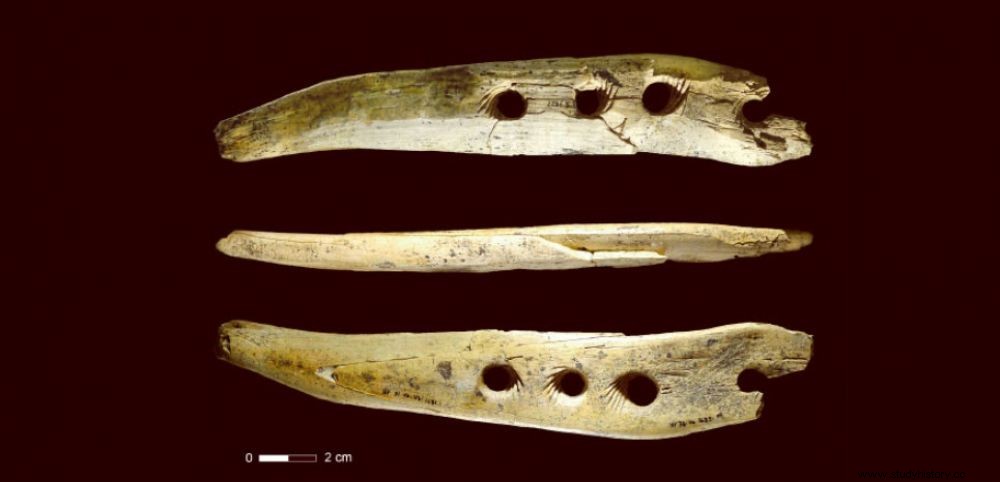 Discovery in Hohle Fels, Germany, of a rare prehistoric tool 40,000 years old. Intended to make ropes, it was carved from mammoth ivory.
Discovery in Hohle Fels, Germany, of a rare prehistoric tool 40,000 years old. Intended to make ropes, it was carved from mammoth ivory. Prehistoric people didn't just cut flints! They even had several strings to their bow... To go hunting, fix stone tools on wooden handles, or transport their equipment, they used strings and ropes that they worked with skill. For the first time, archaeologists from the University of Tübingen (Germany) and the University of Liège (Belgium) have unearthed a 40,000-year-old object designed precisely to weave ropes from plant fibers. The prehistoric tool comes from the cave of Hohle Fels, near Schelklingen, in the Ach Valley, south-west Germany. An imposing cavity in the Swabian Jura already famous for previous finds made over the last two decades by this same team led by Nicholas J. Conard, such as female figurines called "Venus" or flutes, all fashioned in ivory from mammoth.
 Experiment showing how the prehistoric tool from Hohle Fels (Germany) was used to make ropes. Credit:University of Tübingen
Experiment showing how the prehistoric tool from Hohle Fels (Germany) was used to make ropes. Credit:University of Tübingen
According to the results published on July 22, 2016 in the German journal Archäologische Ausgrabungen Baden-Württemberg "l discovered [ made in August 2015, but only revealed this year Ed. Each of the orifices bears deep helical indentations". In other words, a device designed to weave ropes. (The plant fibers were passed through the various holes, then twisted together, in a rotating motion, to form a single rope). "Simple and modest in appearance, yet ropes and strings are essential components of prehistoric hunter-gatherer technology" , explains Christian Lepers, attached to the CETREP (Center for the Study of Techniques and Experimental Research in Prehistory), in Belgium. For this specialist in esparto (the set of techniques that combine long and flexible plants intended to create mats, ropes or items of clothing), only special conservation conditions have allowed these fragile artefacts in plant fibers to reach to us, such as environments of glaciers, bogs or caves. Famous examples:the plant fiber cape worn by Otzi, the 5000 year old iceman found in 1991 at 3210m altitude on the border of Austria and Italy, or remains of 17,000 year old ropes encountered in the cave of Lascaux (Dordogne). To date, the oldest of these known elements were 26,900-year-old rope-on-clay imprints found in the Czech Republic; as well as wild flax fibers of about 30,000 years, in the Caucasus (Georgia).
